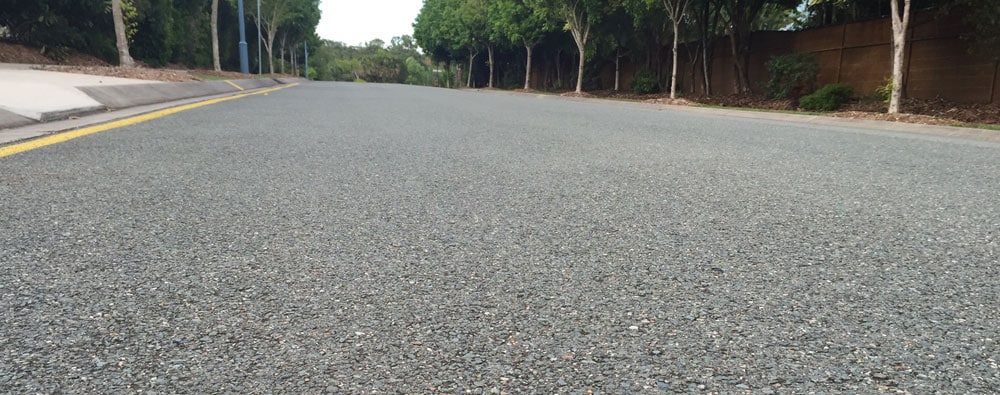
Whilst it is recognised that an asphalt mix is characterised by:
An asphalt mix is typically designed to meet application, whether it be for structural, aesthetic or safety requirements. In Australia, common asphalt mixes include:
Dense Graded Asphalt
Dense graded asphalt is considered the most commonly used application of asphalt which comprises a low void, diversely graded constituent mixed with binder and filler. The key benefits of this mix are illustrated in its versatility in application, typically used in both structural and wearing courses. Other benefits of dense graded asphalt include the range of available binders that can be modified to suit its role in the pavement structure and the desired fatigue resistance and stiffness characteristics.
Open Graded Asphalt
Open graded asphalt is characterised by its ‘gap grading’ which removes the stone gradation between the fine and course stone, essentially creating a mix with a high void content. This mix is commonly adopted for its porosity and ability to reduce water spray and sheeting of water over the pavement surface during high intensity rainfall events. Consequently, waterproofing is essential and it is common practice to undertake ‘flushing’ of the asphalt periodically to remove sediment buildups.
Stone Mastic Asphalt
The term ‘mastic’ within stone mastic asphalt represents the filler and bituminous binder that surround the coarsely graded aggregate skeleton. The aggregate skeleton provides additional stone on stone contact that is considered superior to conventional mixes in resisting internal rutting and deformation. It is also characterised by its comparatively increased binder content, which provides greater elasticity and resistance to load induced fatigue.
When selecting an appropriate asphalt surfacings types, additional consideration is typically given to influences including, typical surfacing life, construction thicknesses, performance characteristics and safety factors.
For more information on Global Road Technology or Asphalt Surfacings please contact GRT.
Are environmental regulations, health and safety concerns or potential profit loss a concern right now?
Contact Us Now